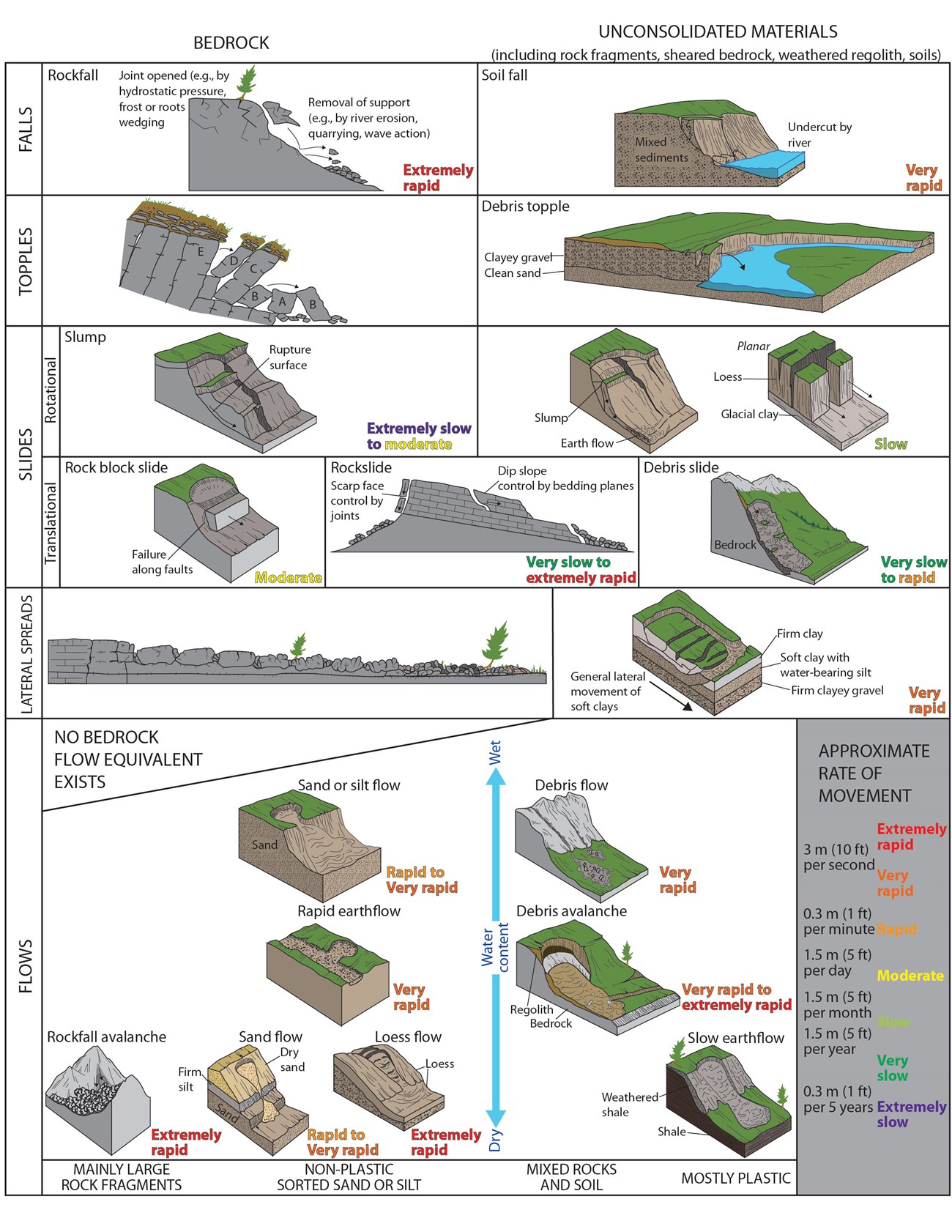
Mass wasting is the movement of rock and soil down slope under the influence of gravity. Rock falls, slumps, and debris flows are all examples of mass wasting. Often lubricated by rainfall or agitated by seismic activity, these events may occur very rapidly and move as a flow. Landslide triggers may include:
- Intense rainfall
- Rapid snowmelt
- Earthquake
- Volcanic eruption
- Stream or coastal erosion
The runout of a mass wasting event depends on the volume of material, water content, and slope steepness.

Illustration by Trista L. Thornberry-Ehrlich, Colorado State University.
Rock Fall or Topple
Falling, bouncing, and rolling of debris down slope.
Land Slides and Rock Slides
Debris Flows
A Debris Flow is a type of landslide made up of a mixture of water-saturated rock debris and soil with a consistency similar to wet cement. Debris flows move rapidly downslope under the influence of gravity. Sometimes referred to as earth flows or mud flows.
Avalanche
An avalanche occurs when a mass of rock or ice falls or slides suddenly under the force of gravity.
Slope Creep
Last updated: September 11, 2019
